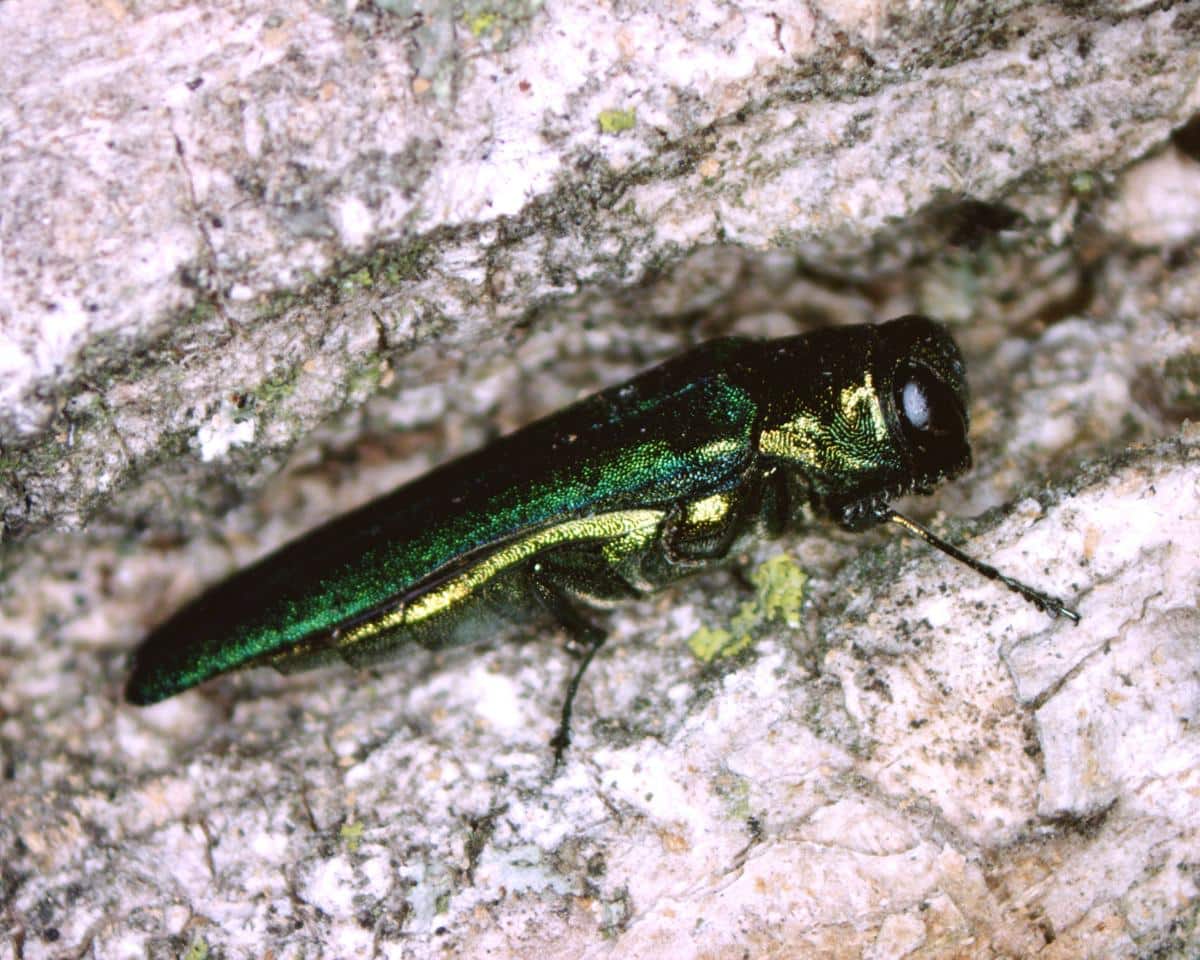
A couple of years ago, when I was taking my usual walk, I noticed something strange on a green ash tree along the route.
“Wait a minute,” I thought, squinting at the top of the tree. “That’s dieback.” The ash tree, otherwise green and leafy and healthy, was suddenly losing leaves at the ends of its branches out of nowhere. Is this what emerald ash borers do to an ash tree?
As it turned out, this was.
I’d heard plenty about the invasive insect and had not seen a tree affected by borers before – apparently, they were somewhat new to the area. However, it didn’t take long for me to see what they were capable of. I was stunned at how fast the tree went downhill. What had been a simple case of dieback became complete defoliation within a month or two, and soon, only bare branches remained. Then, other ash trees in the neighborhood were attacked by the pests and swiftly died in the same way.
I informed the homeowners when I ran into them outside and told them what was happening to their trees. At this point, there wasn’t much they could do to save them, which was sad because these were lovely trees.
So, what exactly is the emerald ash borer? What kind of insect wreaks havoc so quickly?
Jump to:
- What is the Emerald Ash Borer (EAB)?
- The Life Cycle of the Emerald Ash Borer
- Signs that Emerald Ash Borer has Infected Your Ash Tree
- What Do I Do if I Think My Ash Tree is Infected?
- Can Dead Ash Trees Spread Emerald Ash Borers?
- What Can I Do with Dead Ash Trees?
- What Are My Ash Trees Worth?
- What if My Ash Tree Grows Back?
- Can My Ash Tree Be Saved After an Emerald Ash Borer Attack?
- Conclusion
What is the Emerald Ash Borer (EAB)?
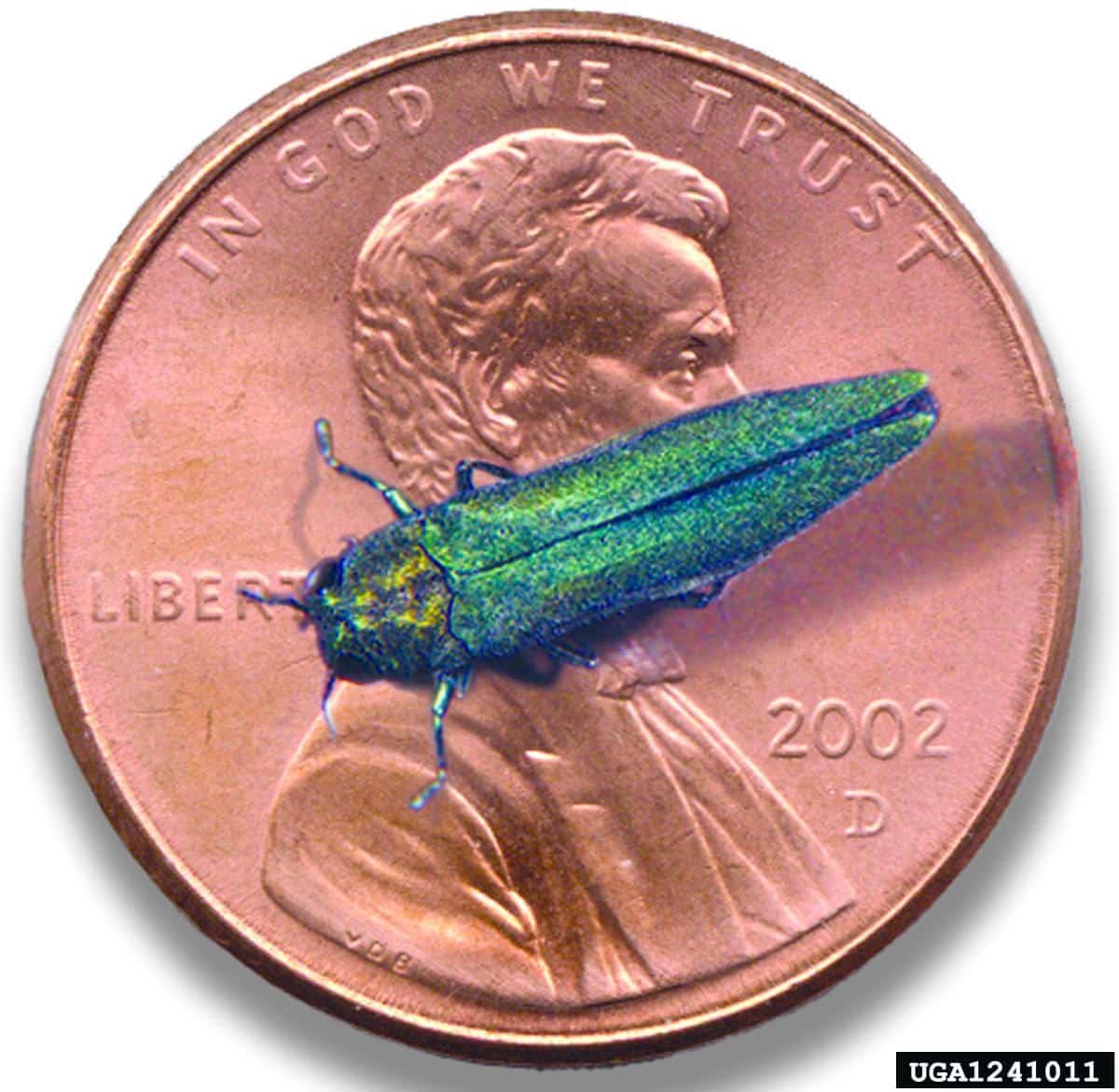
The emerald ash borer (Agrilus planipennis), a jewel-green beetle no bigger than a dime, is native to eastern Russia and northern China. It first appeared in the United States in 2002 and immediately started spreading, killing off ash trees as they went.
The adult beetles don’t cause much damage. These emerald-green beetles eat a few leaves, but mostly, they’re interested in mating.
The immature form of the beetles, the larvae, is the bad guy here. These larvae are responsible for killing off millions of ash trees. They feed on the living cambium tissue beneath the bark, boring tunnels through the thin green layer. The cambium layer transports water and nutrients from the leaves and roots to the rest of the tree.
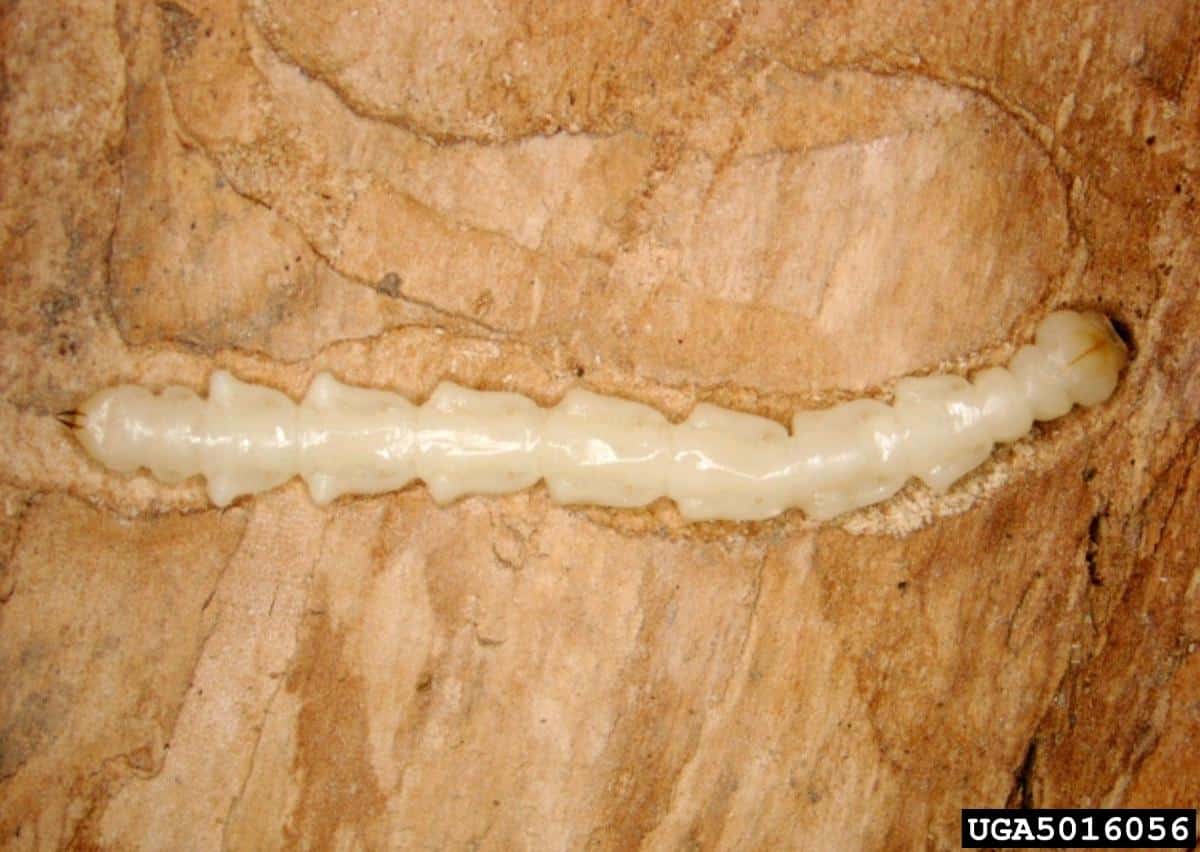
As the larvae devour the cambium layer, the ash tree’s ability to move water and nutrients fails. The leaves at the extremities of the tree start dying off due to this failure. At this point, the damage is already avalanching through the rest of the tree.
The Life Cycle of the Emerald Ash Borer
Adults lay eggs on ash species such as green ash and white ash (Fraxinus pennsylvanica and F. americana), along with black ash (F. nigra) and blue ash (F. quadrangulata). They prefer younger trees with thinner bark, but they’ll also lay eggs on mature trees. Eggs are laid in crevices and cracks in the bark. Two weeks later, the eggs hatch. The newborn larvae chew their way into the tree and start running laps around the tree as they devour the cambium layer under the bark.
Over winter, the well-fed larva pupates, and by spring, it has developed into an adult. Emerging adults chew their way out of the bark, leaving small holes that look like D-shaped drill holes. After eating a few leaves, the beetles start mating. Then, the females fly off and find new ash trees to lay their eggs on.
Signs that Emerald Ash Borer has Infected Your Ash Tree
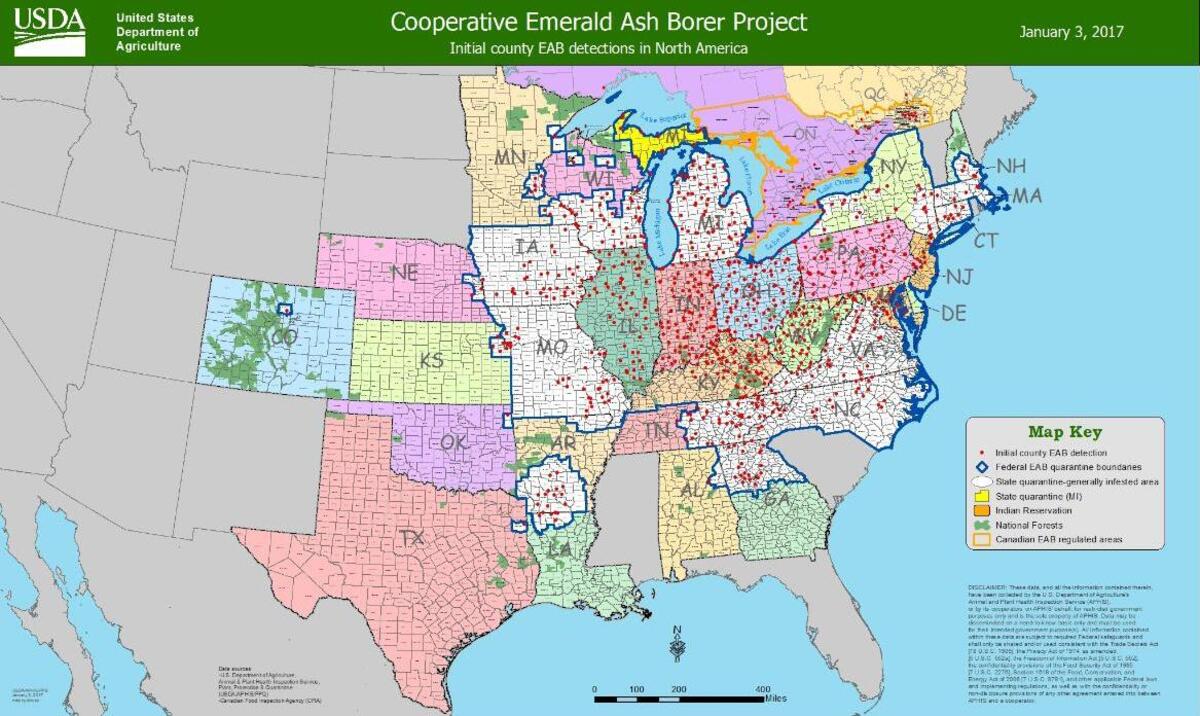
How do you recognize that your ash tree is in trouble?
- If your area on the map has a red dot on it – or you’re near one of those dots. This map was made in 2021, and the borers have spread since then.
- When the upper branches start dying back and losing leaves.
- Small holes that look like D-shaped drill holes appear in the bark.
- If you cut off the outer bark and peel it back, you’ll see little tunnels in curvy designs up and down the inner bark of the tree.
- In advanced cases, the bark has been “blonded” – that is, the gray top layer of the outer bark has been chewed off, leaving it a blonde color.
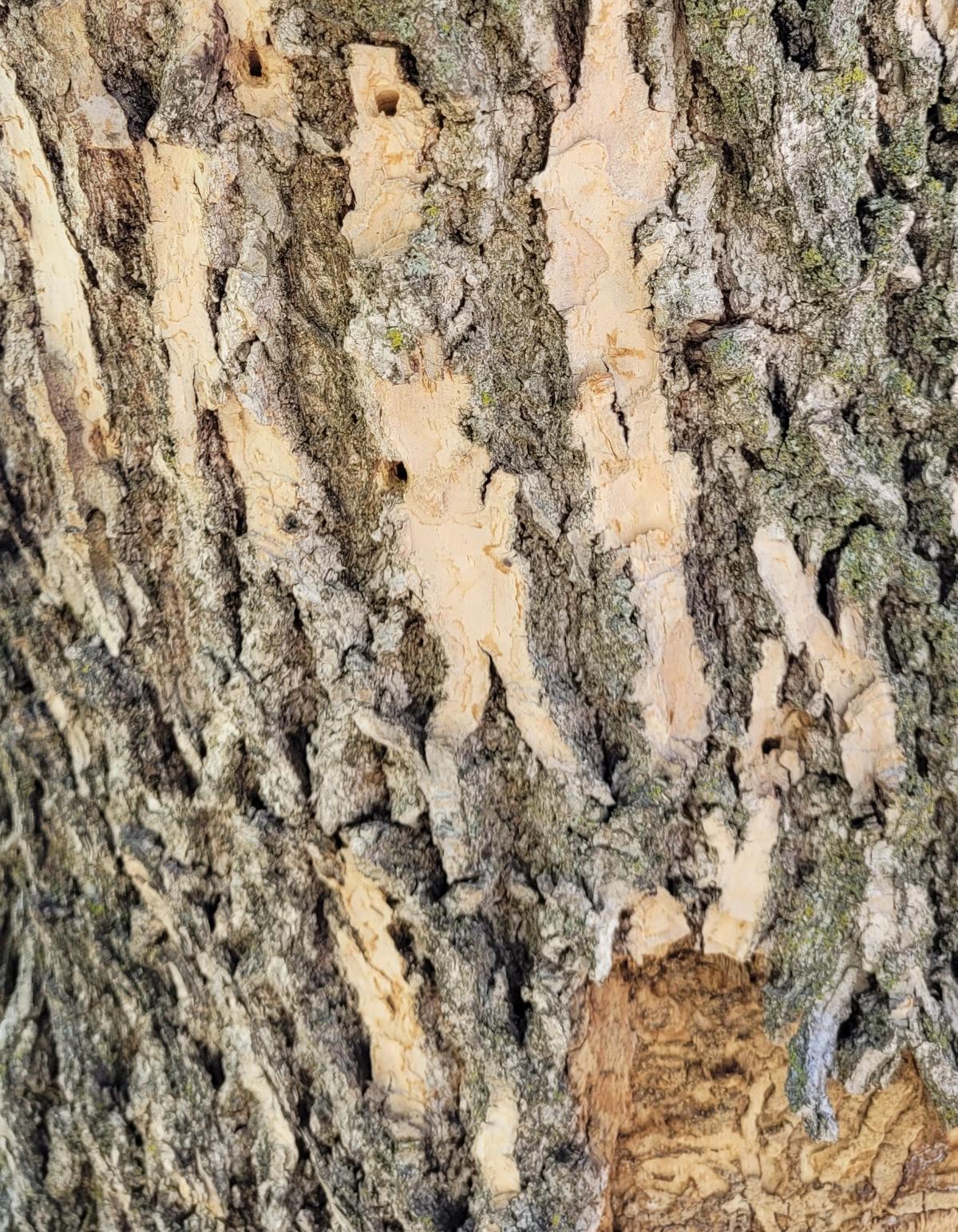
- New sprouts will grow out from the lower trunk and from the roots as the tree attempts to rejuvenate itself.
- Woodpecker activity on the tree might increase as they drill into the bark to feed on larvae.
Even healthy ash trees can still succumb to this borer and die. A few trees have shown some resistance to this insect, and breeders are already working to develop ash species that can withstand borer attacks. But this will take time, unfortunately.
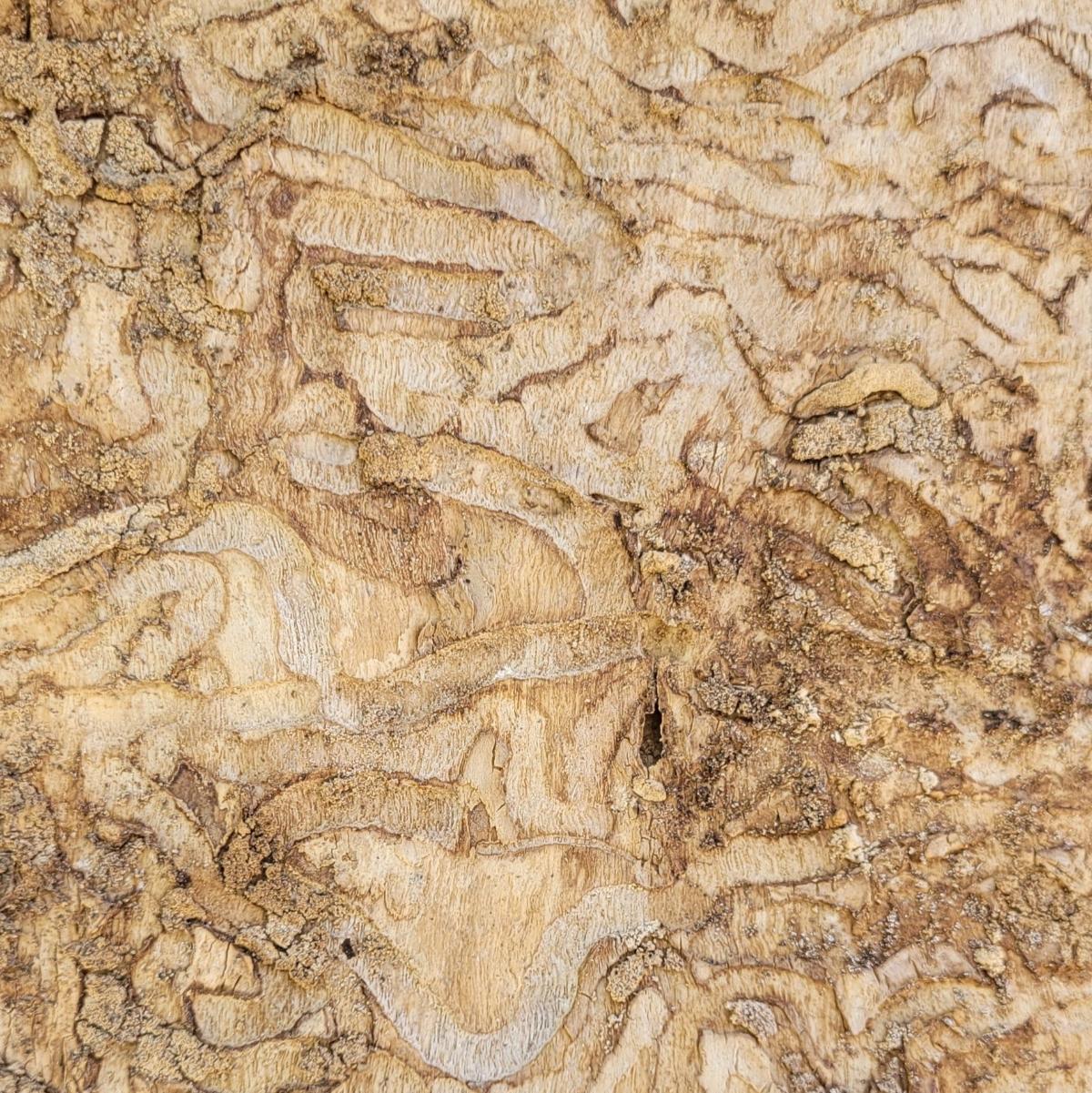
What Do I Do if I Think My Ash Tree is Infected?
Contact a local forester or a certified arborist (one who’s a member of the International Society of Arborists or the ISA). You will have to act because EAB-infested trees become quite brittle and a liability. If allowed to stand for too long, they can also allow the insects to spread to other ash trees in the neighborhood.
And some trees can be saved! More about that in a minute.
Can Dead Ash Trees Spread Emerald Ash Borers?
Yes. EAB eggs laid on the bark will still be viable. If an ash tree is cut down before it’s completely dead, larvae will infest the wood.
Emerald ash borers infest only ash trees. They won’t affect your other trees … unless an ash tree they killed falls on a nearby tree.
Despite its name, mountain ash (Sorbus aucuparia) is not actually an ash tree but a member of the rose family. Also called rowan, this tree is not affected by EAB.
What Can I Do with Dead Ash Trees?
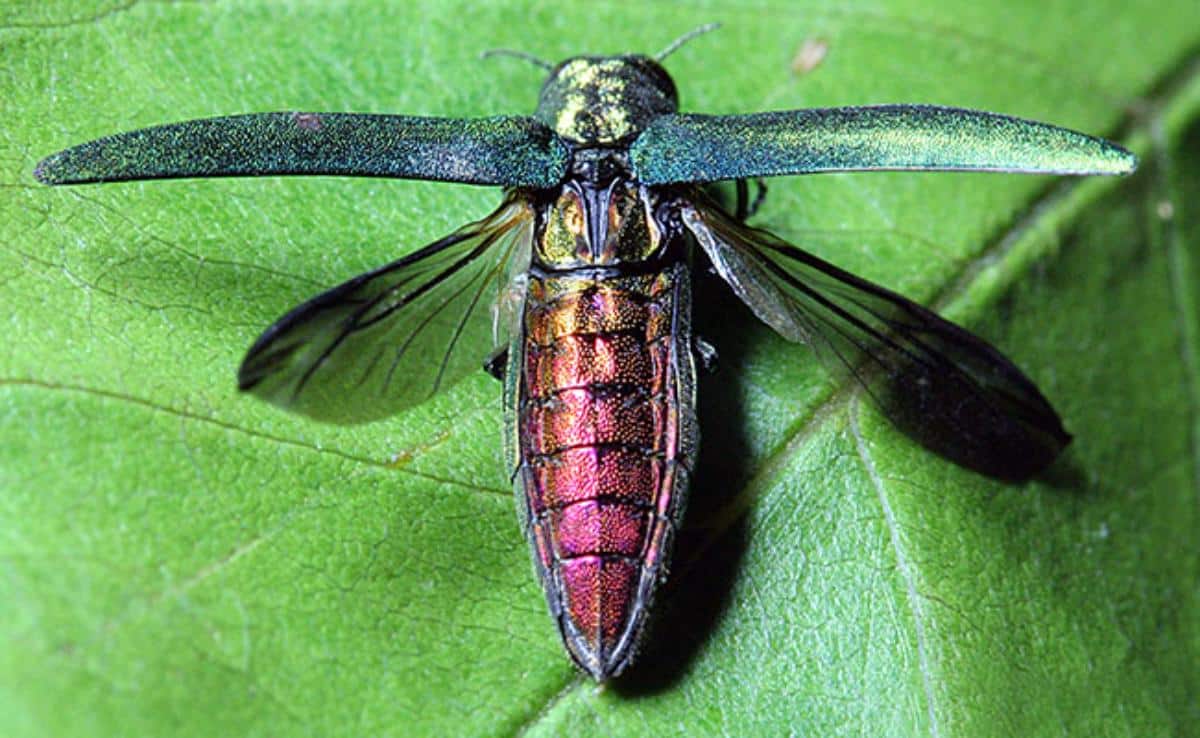
The tree can be chipped and used for mulch on the site. Chipping is fine – a borer larva cannot hide inside a wood chip. There’s nothing for them to eat, and the larvae and eggs are exposed to hungry birds.
Ash is a good wood for the wood stove or campfire – it burns clean and will burn for a long time. But use the firewood or wood chips ONLY on site.
Get all your firewood locally. Beetle infestations have been spread into new areas by people transporting firewood with emerald ash borers hidden in the bark of the logs.
What Are My Ash Trees Worth?
Some dealers buy ash trees that are dying or dead, as those of a certain size can make excellent lumber. Contact a consulting forester or a certified arborist to assess the condition and value of your ash trees.
In some instances, removing a tree might cost more than what the tree is worth. A forester or arborist can talk to you about the cost of removal, let you know if marketing to a buyer would be worth it. They can also tell you if your ash trees can be saved, and how to do it.
What if My Ash Tree Grows Back?
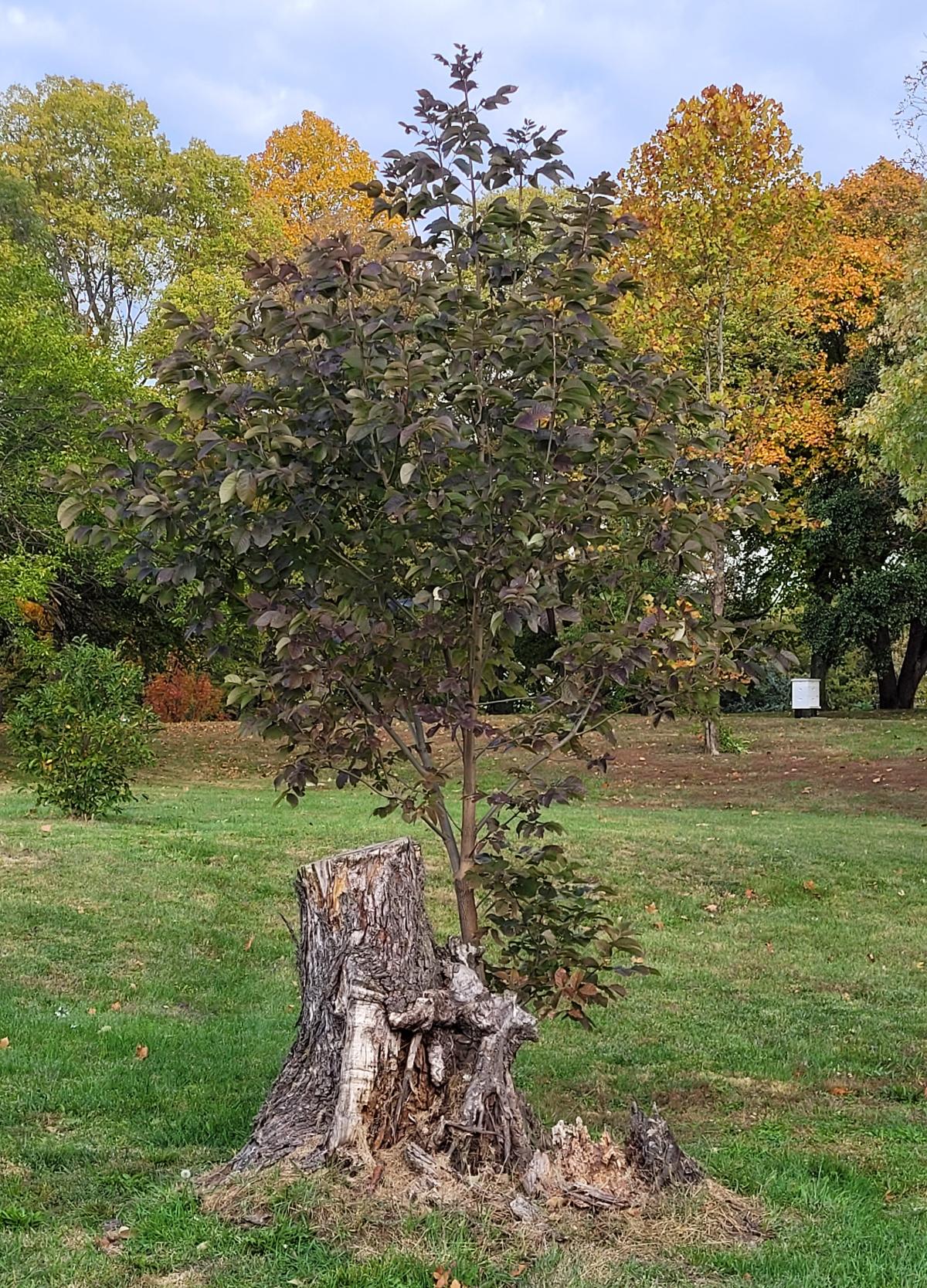
Sometimes a tree affected by the emerald ash borer will grow back from the roots or from the trunk. Ash trees readily coppices – that is, it regrows healthy trees from the stump. These trees are often fast-growing because the roots are well-established and have plenty of stored energy. Cut the stems back to one or two of the healthiest ones.
If the original tree was growing too close to power lines or the house, remove it for insurance reasons.
Monitor these trees for new ash borer attacks. Also, call a local arborist and set up a yearly injection regimen to keep the trees alive and resistant to emerald ash borer attacks.
Can My Ash Tree Be Saved After an Emerald Ash Borer Attack?
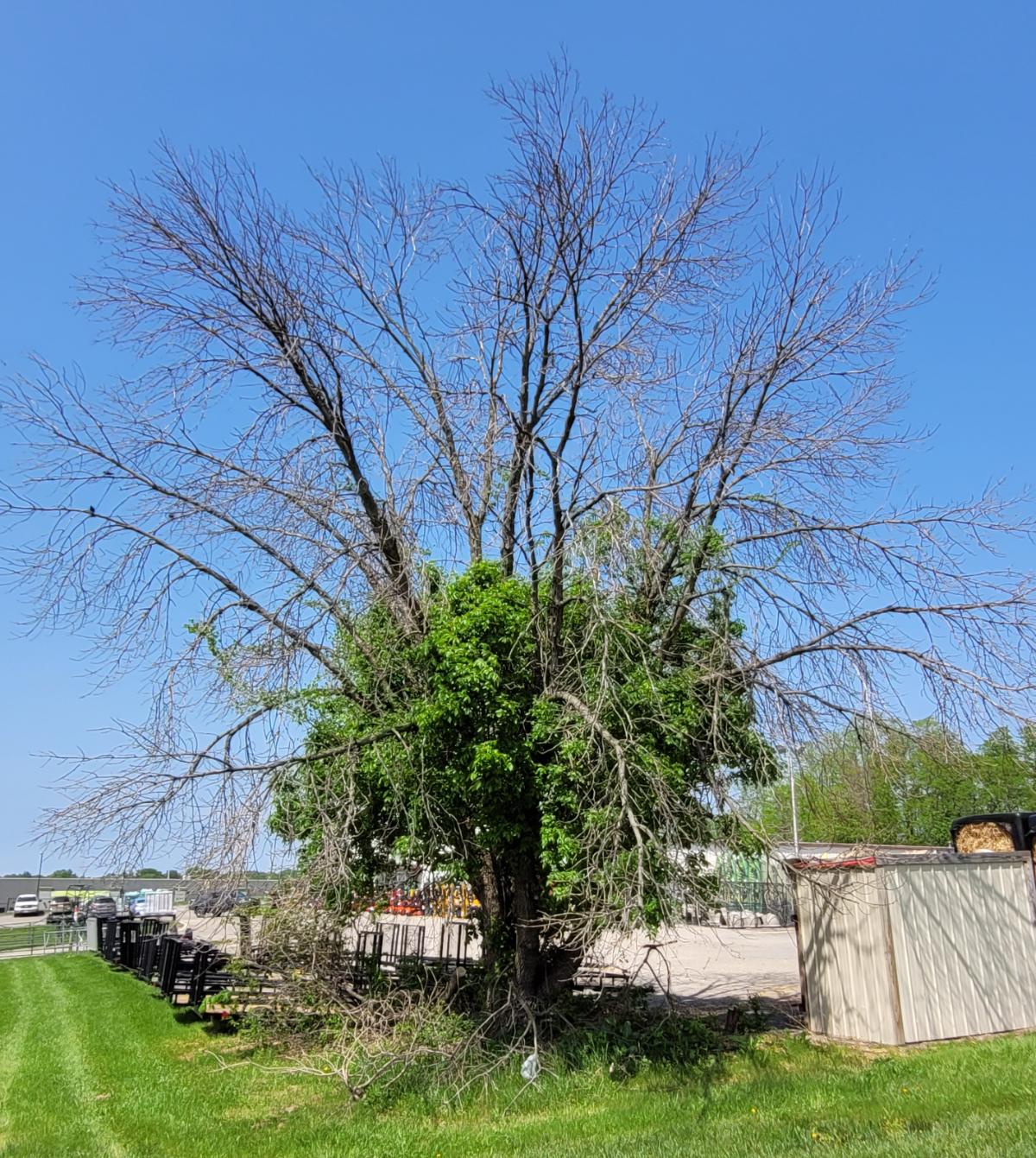
Once the borers are burrowing under the bark, the tree is in trouble. Symptoms on the ash tree are delayed, so by the time you see the holes in the tree or the dieback of the leaves, your tree may be out of luck.
However, modern horticultural science can rescue these trees. A professional arborist can inject the tree every year with pesticides that are targeted to kill off the emerald ash borer.
A systemic insecticide might work if spread around the roots of the tree and watered in, but it has got to be packaged for use on ash trees specifically against the emerald ash borer or other borer beetles. Read and follow label directions, because you want to give the tree enough to spread though the cambium through the tree, but not so much that you pollute waterways with excess insecticide.
Again, it’s best to consult with an ISA-certified arborist to save a tree. (To be certified, arborists with a certain amount of college and several years of full-time arboriculture experience have to pass an involved test, along with other factors.)
Conclusion
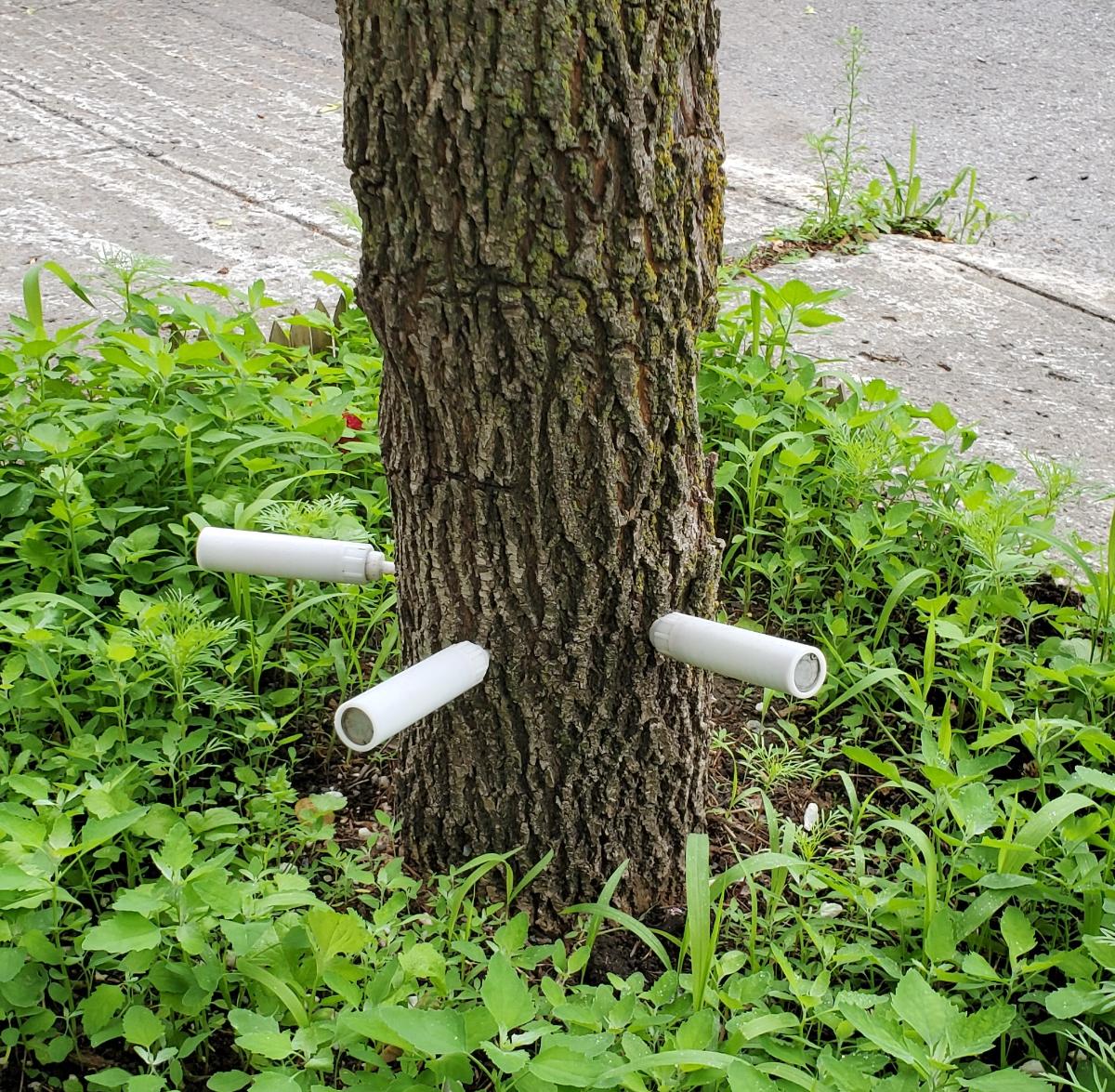
So if you see dieback on your ash tree – or, better yet, before you see it – talk to a local arborist about steps you can take to protect or save your tree from emerald ash borer. Invest in yearly pesticide injections, especially if you have an older or mature tree. Pay attention to signs of dieback or any other warning signs.

If worse comes to worst, have the ash tree removed and replace it with a different tree species.


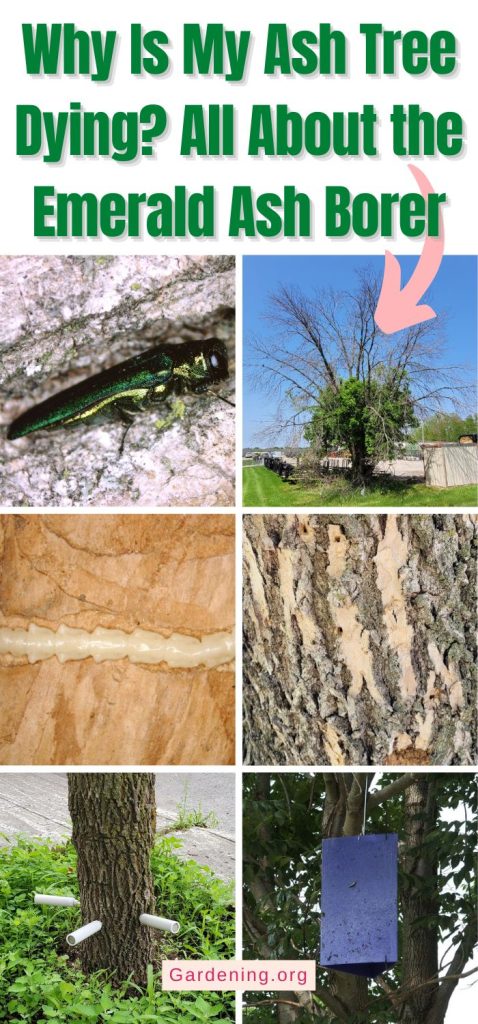
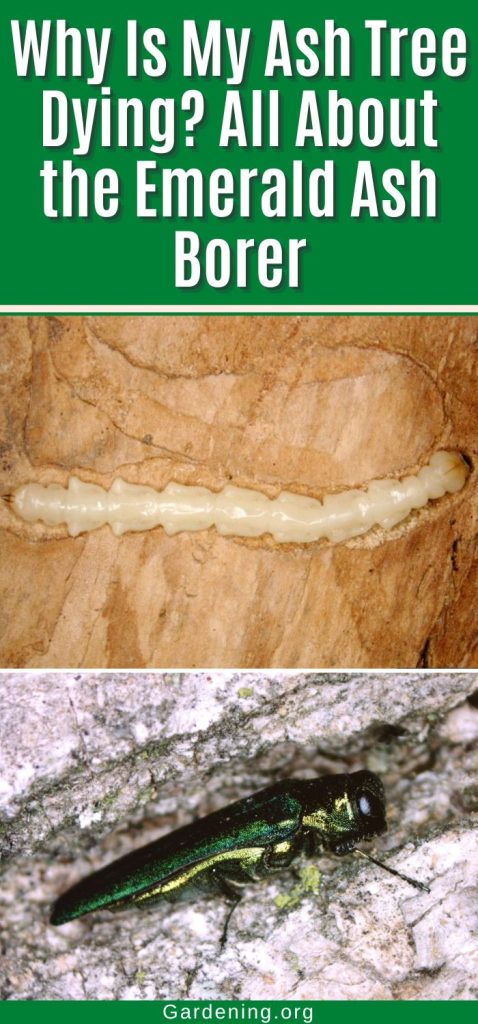
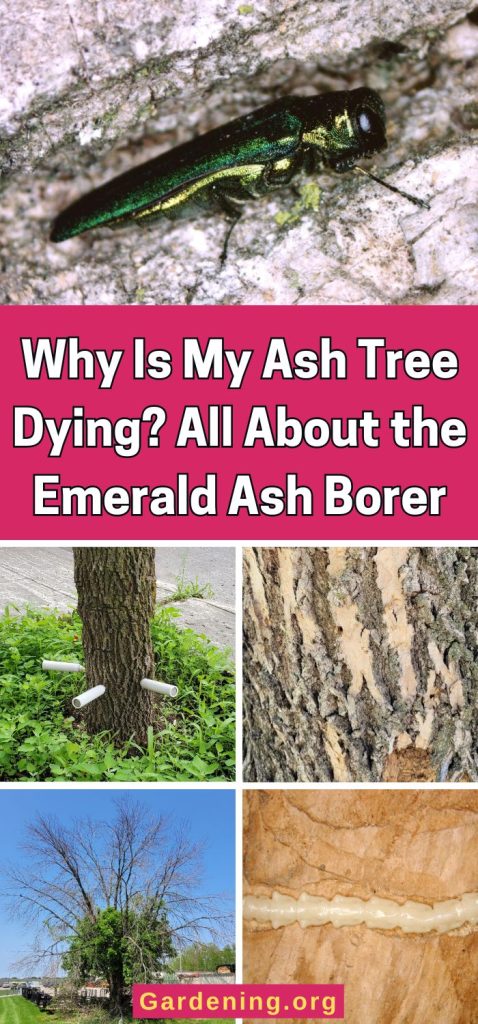


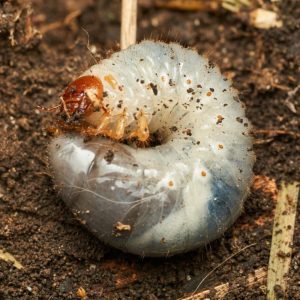
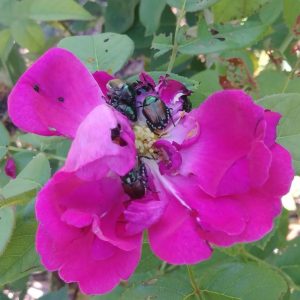
Leave a Reply